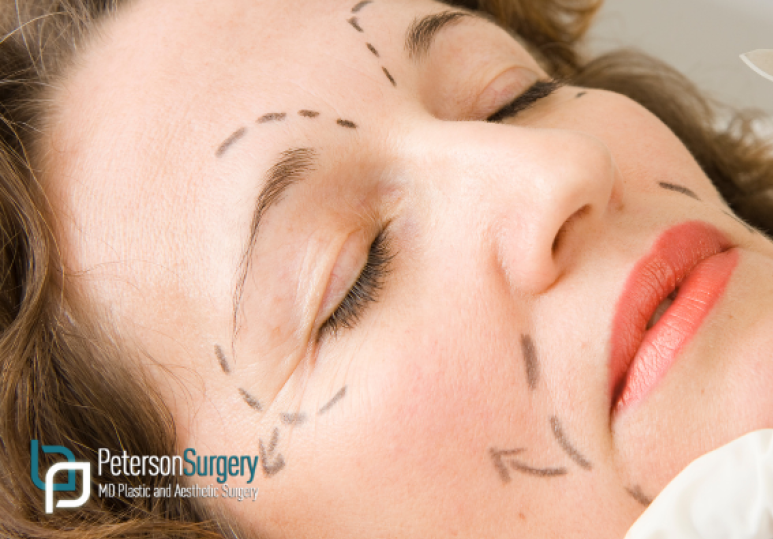Are you considering a dermabrasion skin treatment? This is a popular procedure due to its impressive results for people with visible skin damage. It works by removing the outermost layers of the skin, leaving you with new, smooth skin- free of scars, wrinkles, and blemishes. Not to be confused with microdermabrasion, dermabrasion is a more intensive treatment option and it is important to do your research and receive the surgical procedure from a qualified cosmetic surgeon. If you want to know exactly what to expect, here is everything you need to know before you say yes to this type of cosmetic surgery.
Book a Consultation Contact Us
What is Dermabrasion Skin Treatment?
Dermabrasion is a cosmetic procedure that helps to smooth the skin. A doctor will use a dermabrasion tool such as a wire brush, a burr, or a diamond fraise to safely remove the top skin layers of your skin, also known as skin resurfacing. This treatment purposely causes injury to the skin which will produce new skin in its place.
Dermabrasion is most often performed to improve the look and feel of the skin on your face but can also be used on other parts of the body if desired. Some of the reasons to get dermabrasion are to reduce and/or remove:
- scarring from acne
- fine wrinkles and lines
- surgical scars
- sun damage
What to Expect when Getting Dermabrasion
Dermabrasion is considered a day surgery and is typically performed as an outpatient procedure, meaning you will attend a cosmetic surgeon’s clinic for typically less than a day. For very severe cases, you may require general anesthesia which lengthens the procedure time. Your doctor will advise on what type of anesthesia you will receive during your pre-treatment consultation.
During a dermabrasion surgery here are the steps that will be completed:
- Your skin will be thoroughly cleaned and prepared.
- Boundaries will be marked to show exactly where to use the dermabrasion tool.
- Your skin will be numbed prior to beginning the procedure.
- Using a combination of cryogenic spray and ice packs, your skill will begin to firm up allowing for optimal connection of the tool to the area to be treated.
- Next, the dermabrasion tool will be applied to gently and carefully remove layers of skin.
- The length of the procedure will depend on the size of the area, and the amount of damage that is being treated. These factors will have an effect on treatment time as extensive skin damage will need to be abraded longer and deeper with the tool to achieve the desired result.
- Once the procedure is complete, your skin care professional will apply medicinal ointment and dressings to keep the area clean, protected and to prevent a scab from forming.
Recovering from Dermabrasion
Much like treatment time, skin healing will also vary based on the size of the area and the extent of scarring you want to have treated. After a week, or so, your skin will begin to heal itself with new skin regrowth. You can expect to have a pink, or red, skin tone for many weeks after the procedure which you can reduce the look of with a high-quality, hypoallergenic makeup.
Pain medication will be prescribed by your doctor if needed, but the pain should not last long. Sometimes a steroid will also be prescribed to help reduce swelling and encourage quicker healing.
Taking excellent care of your skin post-treatment is crucial for you to have great results from dermabrasion. Your cosmetic surgery team will advise you on how to care for your skin and it will look something like this:
- Your new, fresh skin will need to remain moist to promote healing and help prevent scabbing. You can do this by applying the post-operative ointment and by changing wound dressings as recommended.
- Clean your skin often using warm water to gently remove scabs and bacteria build up on the area trying to heal.
- Avoid all sun exposure until the peeling has completely stopped.
- After healing is completed, continued use of a high-quality, hypoallergenic sunscreen to protect your new skin is recommended for at least a year, as it is highly susceptible to sun damage.
- An important part of post-surgical care is to attend any follow-up appointments as recommended by your dermabrasion medical team to monitor healing progress and avoid any complications such as an infection.
If you are looking for a high-quality, safe, and professional dermabrasion treatment in Kelowna, BC the team at Dr. Brian Peterson’s Office of Plastic and Aesthetic Surgery will be happy to answer all your questions. Contact us at (250) 868-9099 or by filling out the online contact form below.
FAQs
Is dermabrasion safe?
Dermabrasion is a very safe and effective cosmetic procedure when performed by a qualified and experienced physician. The possibility of risks, or complications, is greatly reduced when you choose and follow the advice of a qualified plastic surgeon.
Is a dermabrasion skin treatment good for your skin?
By using a tool to cause regrowth and regeneration of the skin, dermabrasion is a safe and effective way to reduce the appearance of flaws, scars, sun damage, age spots and wrinkles. Your skin will be blotchy and sensitive for a few weeks after the procedure but is otherwise a great way to improve the look and feel of your skin.
Are dermabrasion and microdermabrasion the same?
Although they sound similar, the difference between the two is the intensity of skin resurfacing. Essentially, Microdermabrasion exfoliates the outer layers of the skin, while dermabrasion is a controlled surgical method of forcibly removing the uppermost layers of your skin with a tool that triggers the growth of new and youthful skin.





